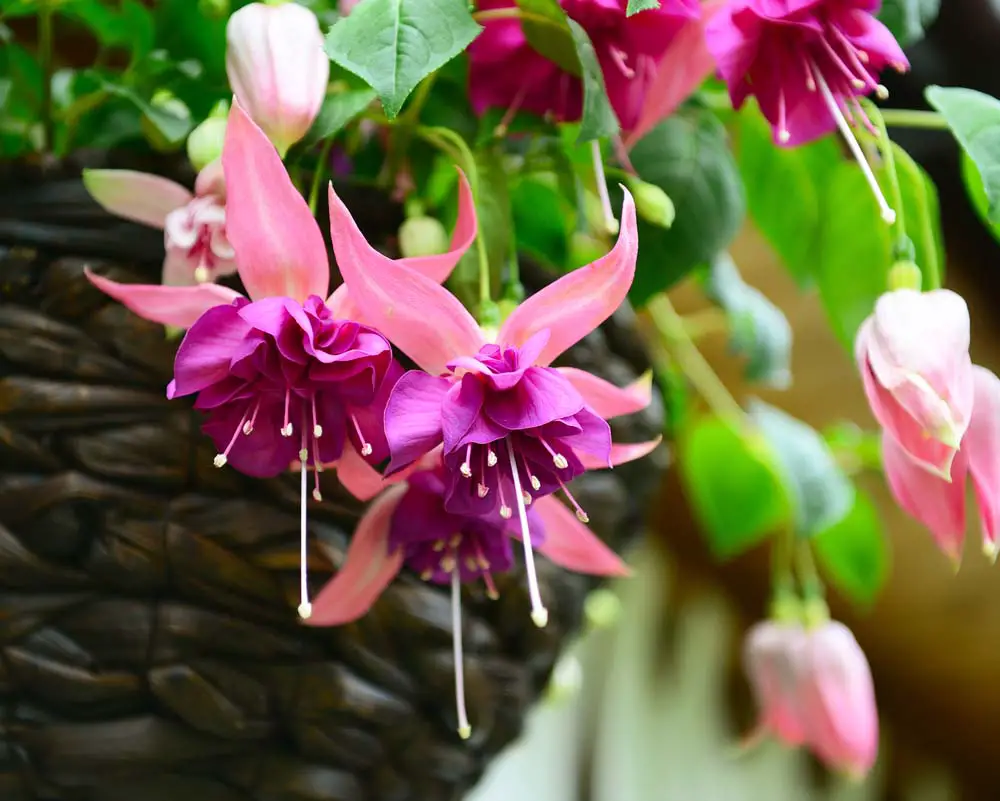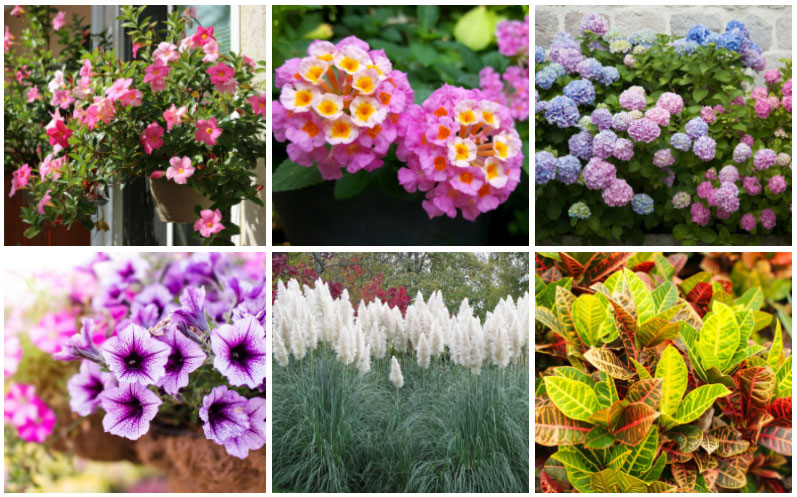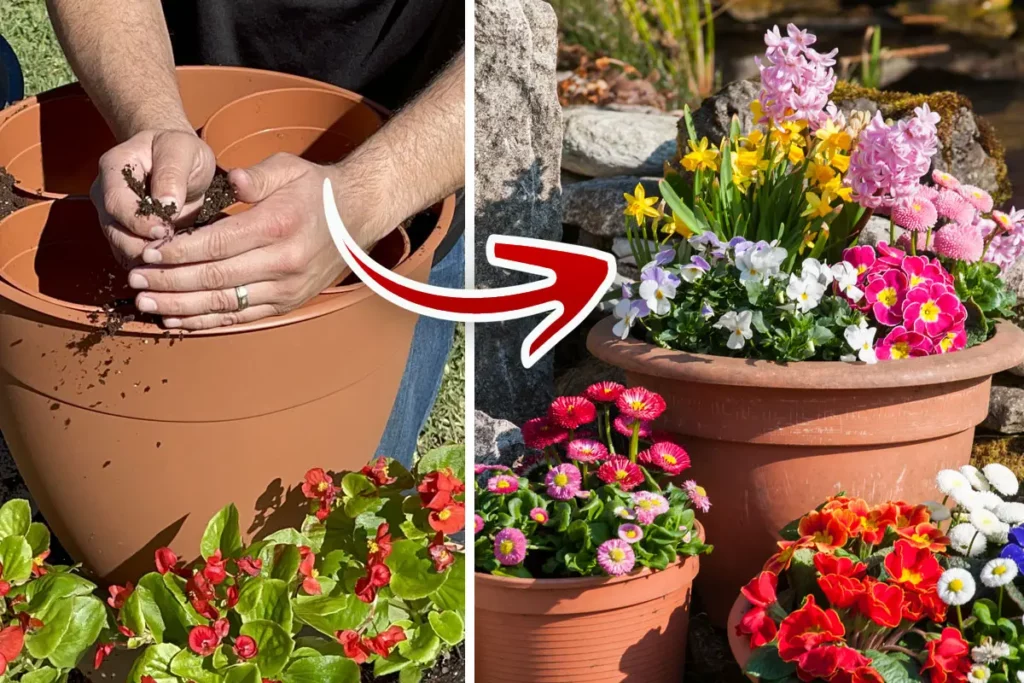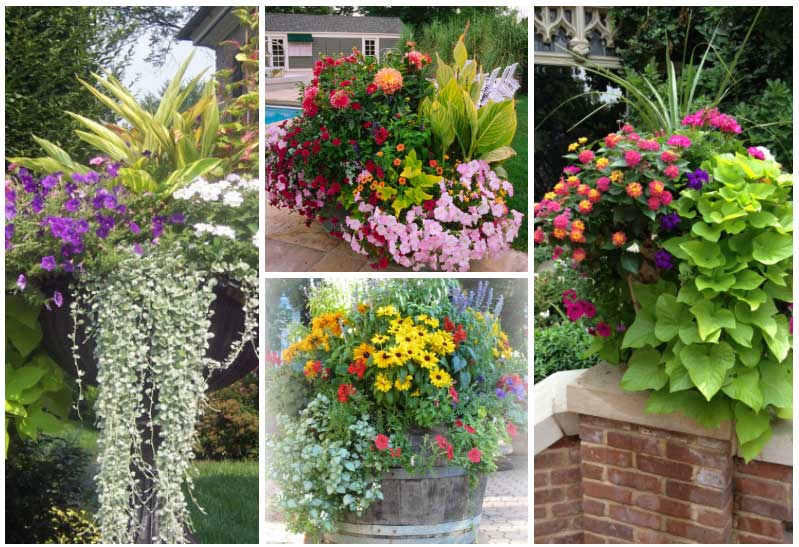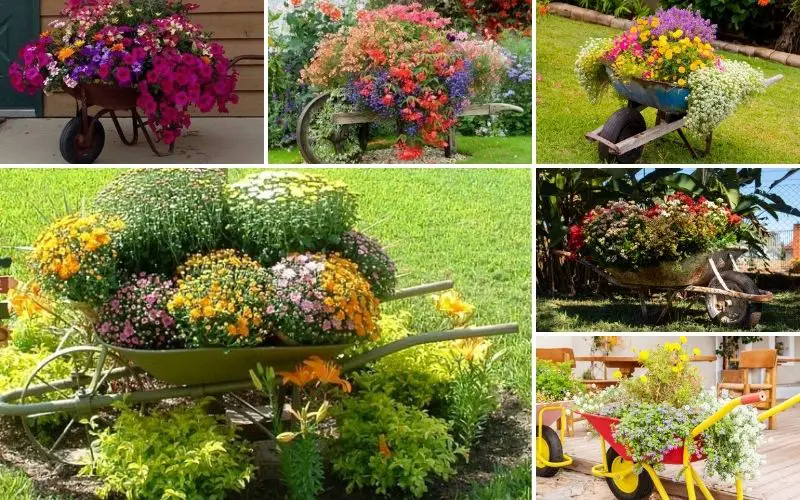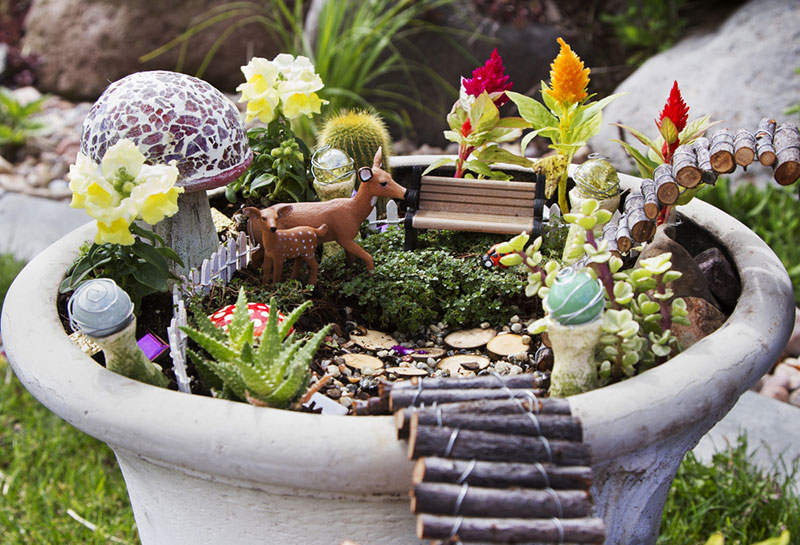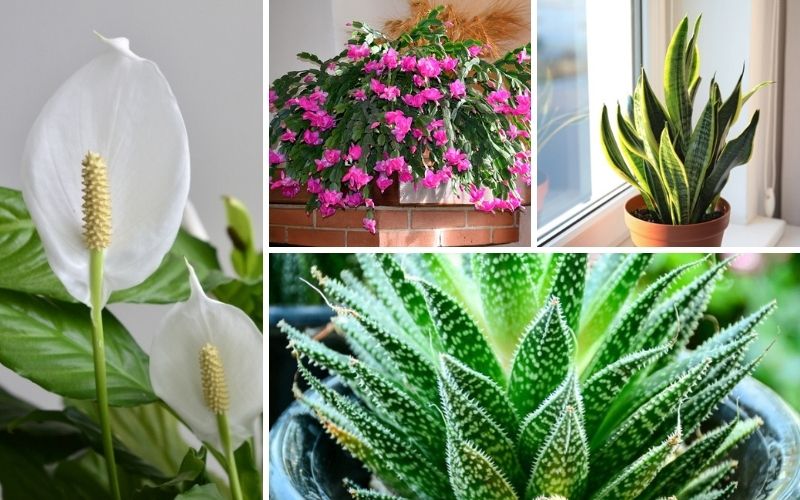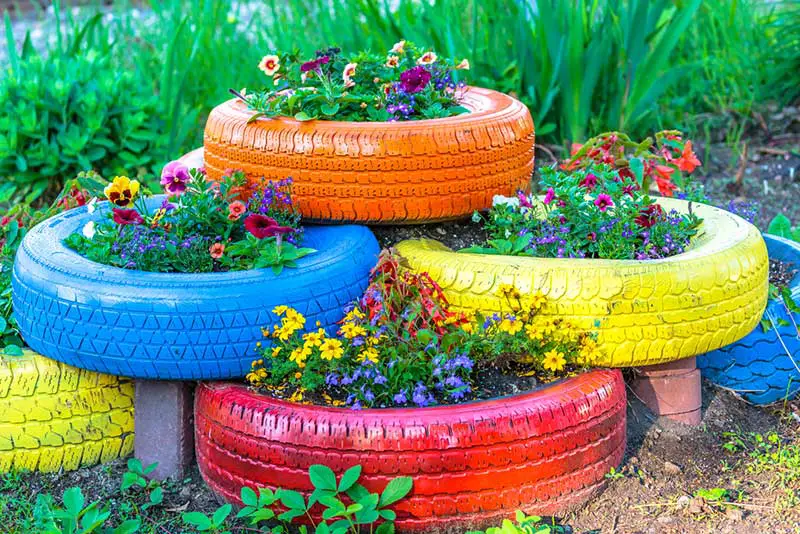Hanging baskets are one way to let your imagination run wild with plants while not taking up too much space. These suspended container gardens let you place flowers and foliage in areas that would otherwise look very plain or monotonous.
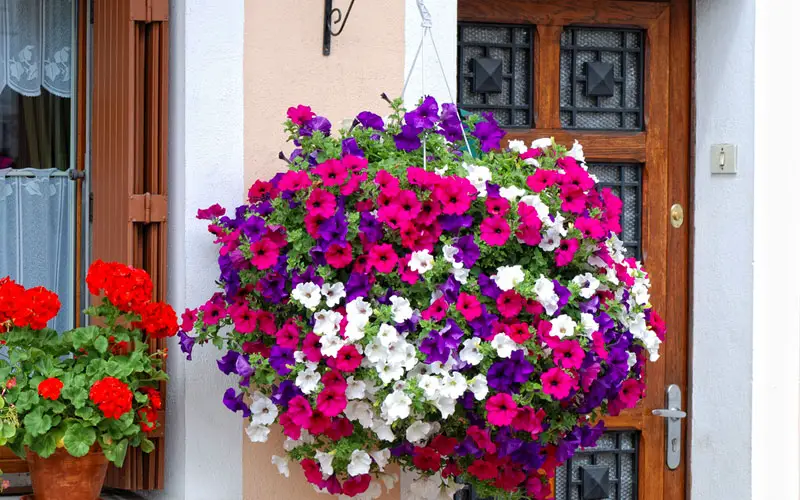
Growing plants in a hanging basket is actually pretty simple; the hard part is putting the basket together when you’ve never done so before.
Seeds vs. Transplants
Annual plants work wonderfully in hanging baskets that you might need to bring indoors during cold or harsh weather – if the plants have been removed after their growing season, then storing the containers will be a lot easier – but you can grow perennials in these, too.
You also have a choice to grow plants from seed or from transplants you buy at garden centers. Transplants are the easiest; just plant ’em and hang the basket. Seeds need to be started indoors, under LED lights (not natural sunlight), which means you’ll have to transplant them into the basket after they’ve sprouted and grown a bit indoors.
The Basket and Hanger
Your basket has to meet three requirements. It must have drainage holes; no holes means no drainage, which leads to a drowned or diseased plant. You should avoid placing a container with holes inside a decorative container that has no holes itself as removing the basket to empty out the water is annoying. With holes in the main basket, drainage is simple and effective.
The second requirement is that it has to have adequate room for all the soil and roots. Those transplants are going to grow, and those seedlings are going to send their roots far and wide, relatively speaking. So, a wide basket that allows for several inches of soil all the way around the root is best.
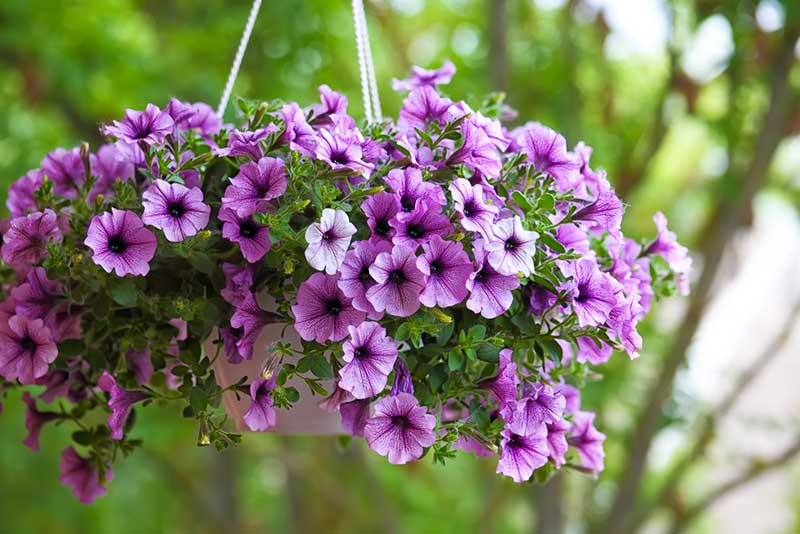
The third issue is that the basket and hanger, as well as the hook you hang them from, must be able to hold the weight of the assembly plus soil, plants, water, and anything else like stakes. A heavy basket on a weak hook will fall.
Match the Growing Conditions
If you have more than one variety of plant in one basket, the growing conditions for all of those plants need to match. You’d think that would be obvious, but it’s easy to get so excited about all the color combinations you can create that the care gets put on the back burner. It shouldn’t; if you have plants with different needs in one basket, some of those plants won’t fare well.
Create baskets with plants that all need full sun, for example, or others that need a particular type of soil. They’ll be easier to care for and likely look a lot fuller.
Heights and Trailing Vines
The height of the plants in the basket needs to be kept under control. Keeping plants under 8 inches tall or so is best. That way, the plants won’t interfere with the hanger. You can let vines and stalks trail, of course; some plants grow these super-long tendrils that flow down to the floor.
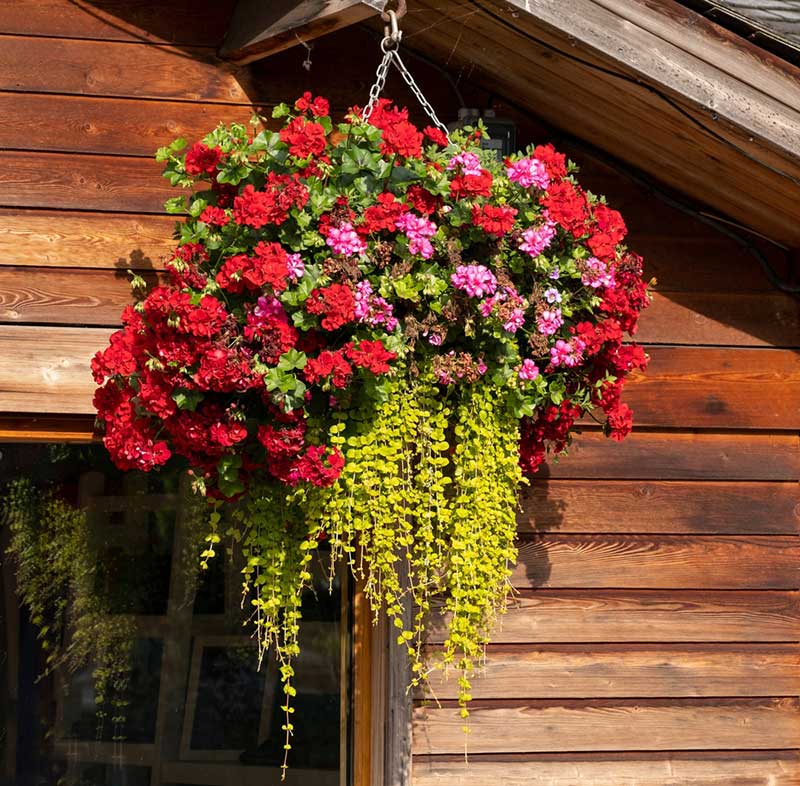
Create Color Themes
You don’t have to match colors exactly, but try to have a theme going in each basket. Maybe red and blue in one, and yellows, light oranges, and light purples in another. Look for ornamental peppers that you can surround with green foliage, or create a classic hanging basket with plants like spider plants or pothos.
And Finally, Watering and Fertilizing
Container plants dry out really quickly. You may actually need to water these daily. Check the soil each day to see if the top inch is dry; if it is, water the soil. Fertilizer is a good idea, and there are liquid fertilizers meant for houseplants that you can use. Add a few drops when you water.
As long as you have a basket that meets the requirements listed previously, and as long as you choose plants that will survive during your area’s seasons, you can try planting whatever you want. Have fun with this! See if a small passion fruit vine will work, or create color palettes that match upcoming holidays. Try planting wildflowers in the hanging baskets, or seeing if you can maybe sneak in edible pepper transplants. There’s really nothing that says you have to stick to just a few classic plants.





